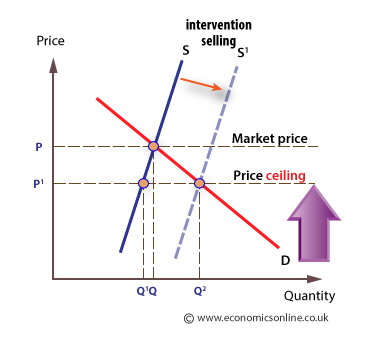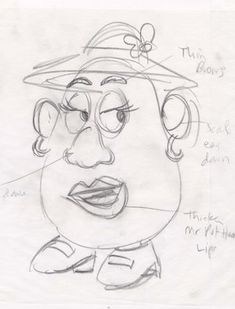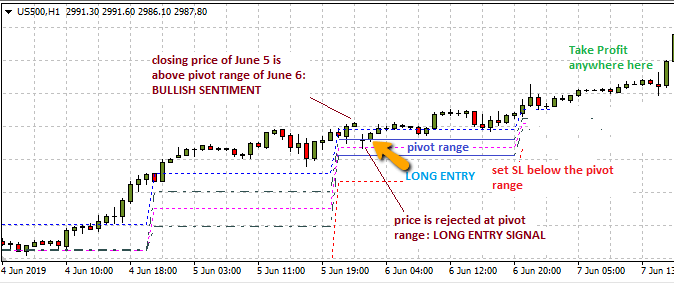
A right-wicked candle burns cleanly, less or no soot given off. But if not, you need to choose the right wick size by yourself. The only way to know how long and how thick your candle wick needs to be is through testing. It’s not easy, but we will walk you through the whole process.
We’re here to help with our complete guide to candle wick sizes. So how does one ensure that the candle flame gets the oxygen it needs? The width of the tunnel created by the burn pool is usually determined with the initial burning of the candle. The burn pool, which is the extent of melted wax, establishes the ultimate diameter of useable wax that the candle will ever use in subsequent burnings. The solid wax remaining around the outside of the burn pool will help the candle to retain its shape. For this reason, I always tell my customers that beeswax candles are intended to be burned all evening, not just a couple minutes and then extinguished.
Flat LX Candle Wicks:
Finding the right wick size requires some experimenting. Square braid is the best wick for beeswax and was designed for this purpose. They can also be used in other waxes like paraffin and soy. They give a nice curl when burning to minimize carbon buildup.
Once you find your wick size for a perfect burning candle you can keep using that wick size whenever you make that candle. The wax type plays an important part in wick selection as it provides the fuel (melted wax) to support burning. A type of wax may work better with a certain type of wick. Waxing or “priming” a candle wick comes with several benefits.
Looking at the side of the candles shows the difference in melt pool depth between the properly wicked candle in the center and the over wicked candle on the right. It is also apparent how much faster the candle on the right is consuming the wax. An over wicked candle will not burn as long as one wicked correctly.
Is the Candle Wick Size Interchangeable between Different Wick Types?
It’s safe to say that a right wick is basically the heart of candles. Each candle wax type has a different melting point and density. These variances influence the recommended candle wick type, as you’ll see below. A waxed wick will make your candle easier to light and stand up straight in the melted wax.

Read our How To Pick Candle Wicks For Homemade Candles article to learn more about finding the right wick. After that, you can find our collection of candle wicks here. Once you choose your wick (or wicks), finish laying out your candle design on paper. Most candle makers start with making three candles at once, each with a different size wick to see what happens.
Mushrooming:
Including a candle wick size chart for soy candles, wood wick candles, and the best wicks for beeswax candles. Actually, you can try any type of mainstream wicks for soy candles, including ECO, CD, LX, and wood wicks. You can refer to the candle wick size chart for soy wax to find the recommended wick type and size. This series is designed specifically for natural waxes like soy and palm wax. The ECO series is a flat, coreless cotton wick braided with thin paper filaments interwoven for burn stability.
Wax selection plays one of the largest roles in your wick type because liquid wax (as the fuel) transports through the wick into the flame. How that wick is built input-output ratio formula determines how easily, and how much, of the melted wax moves through the wick over time. Keep in mind that these are only estimates for LX and ECO wicks.
What are Hammer Candlesticks in Trading? – FOREX.com CA – FOREX.com
What are Hammer Candlesticks in Trading? – FOREX.com CA.
Posted: Wed, 12 Jul 2023 14:25:39 GMT [source]
So, it’s crucial to learn the different types of candle wicks, too. Different type of wax has their special properties in melting points, textile densities, color and fragrance reservations, etc. Such properties will greatly influence which candle wick is optimal.
Step 2: Choose a wick series (or two)
So read the descriptions of all of the wicks that match your container size and choose one that doesn’t mention mushrooming. A nice steady flame with minimal popping, and flickering. Some different types of wick material, low-quality wicks, and homemade wicks if you have not yet mastered your craft can be problematic.
- It’s so important to choose the right candle wick for your DIY candle projects.
- And if you are unsure how much candle wax you’ll need, check out our easy candle wax calculator.
- If you want to read more about the fire testing standards and specifications for candles checkout ASTM F2417.
- The quantity of the oil and color used in the candle also matters when selecting a wick size.
- These wicks have all been primed (pre-waxed), cut to the specified length, and tabs have already been crimped on.
If it has not then the wick size that you are using is likely too small. If the molten wax pool is deeper than 1/2 of an inch, then the wick is likely too large. A complete wax pool means that the wick is hot enough to melt the surface wax of the candle from rim to rim with the surface wax completely melted. A wick that is hot enough to do this, while maintaining its level is essentially the perfect size wick for a container.
If four hours pass and nothing fails, extinguish and allow to cool back to room temperature before starting another 4-hour test. This means testing the candle from start to finish – no exceptions. The only way to know if your choice in wick worked is through a proper test. Multiple wick designs are nuanced, and deserve an entire section – so consider this a rough starting point. Wax manufacturers typically design their wax for a specific application, so make sure you’re selecting one that’s appropriate for your candle. They come together when the wax melts and has to travel up through the wick.
I’ll even go so far as to say that the containers, type of wax, and scent you select won’t matter if you use the wrong candle wicks. Our soft wood wicks are comprised of two identical pieces of wood pressed together. The dual wick is ideal for natural waxes such as soy as well as waxes that can hold a lot of fragrance oil. Flat braided cotton wicks, chemically treated with a high melt point wax (212°F). Can be used in virtually any application, we’ve found that these wicks perform very well in paraffin and IGI 6006.
If a customer keeps seeing wisps of smoke rising from their candle they might be less likely to purchase a candle from you in the future. One of the most important parts of candle making is matching the right wick to the rest of the ingredients that you will be using. The size needed for a candlewick can be impacted by the type of fragrance oil, the fragrance oil load, the amount of dye used, and the shape of the candle. Allow the candle to cool for at least five hours and repeat steps 4, 5, and 6 until the candle is completely burned. The quality of burn will almost always change during the entire burning of the candle.
The high flame will be easily affected by the airflow. Consequently, you will see a dancing or flickering flame. With https://1investing.in/ the right wick size, the candle can burn with a consistent flame, less flickering, and no self-extinguishing.

However, the truth is you should make a few dozen candles and a few months of testing before selling candles to anyone. NorthWood Distributing is a family-owned candle supply company that carries top-quality supplies for making candles, soap, wax melts, bath bombs & more. If you are testing more than one wick, make sure the candles are clearly labeled. From simplifying your skin care and cleaning routines to making your own candles and soap.
It takes some experimenting—but that’s all a part of the fun, right? If you’re new at candle-making, start by choosing wax, color, and fragrance, then find a suitable wick. Referring to the characteristics of a right-wicked candle mentioned at the beginning, you can find out which candle wick size works best for this recipe of candles. You can try LX12-28 depending on the height of your pillar candles. Here is a wick size chart for pillar candles, for reference only.
Understanding Basic Candlestick Charts – Trading – Investopedia
Understanding Basic Candlestick Charts – Trading.
Posted: Fri, 11 May 2018 13:40:01 GMT [source]
Continue to document the candle profile through each step in the process. So keep that in mind when you are making candles to sell or give away when it could be a week or more before the candles are going to be used. Also keep in mind that this chart is not intended to be used in lieu of testing your candles. It’s very important to test your candles before giving them as a gift or selling them. Simply open the file from your downloads folder and print as many copies as you like. Printer setting may differ, but we recommend selecting the “fit to page option” in your printer settings.
Conducting a burning test is time- and effort-consuming. But in order to make a well-performing candle, especially if you want to use the recipe in a candle line, it’s a must. However, if none of the three work ideally through this test, you need to adjust the wick size and restart. The three wicks should be of different sizes as suggested earlier. They are the suggested size in the chart, the size above, and the size below. If you’re making candles without a container, like pillars, go to measure the diameter of your mold.
First the match lights the wick and the wick itself starts to burn. The wick acts as a pipeline that carries the melted wax in the form of a vapor to the flame via capillary action. Some wicks allow lots of fuel to flow quickly through a big pipe, while other wicks pump fuel more slowly through a smaller pipe. If you give the flame too much or too little fuel, it will burn poorly, or sputter out.
You can use the following guide for recommended actions to take if your candle gives off a “signal”. If you couldn’t say yes to all those questions for any of the wicks you tested, choose a new wick (or several wicks) and make more candles (or use some of these hacks). Then just create your three candles, allow them to cure for a proper amount of time, and continue to the burn test. Sometimes you get lucky, but don’t settle for an unsafe candle just because you’re frustrated by the process. Use our Wick Guide tool to find a wick recommendation for your candles. The wick you’re using may be too small or too short to have enough wax melted.
But, if we can use a wick with the right size and type, the mushrooming may be solved easily. With the right wick, a candle will burn evenly, cleanly, and reliably. If the wick is too small or too large, it will cause problems such as smoke, soot, or even self-extinguishing. Ask your friends and family for feedback on how they thought the candles performed vs candle brands they’ve used in the past. Ask them questions about burn time, mushrooming wicks, scent throw, tunneling, and get all the feedback you can.
When conducting a burning test, you need to get three sizes of wicks under the same type. If you want to change the wick type, you need to find another three wicks under the same type. For example, if the diameter of the container is larger than 4 inches, the candle wick isn’t able to have enough fuel around. We’ve listed the common problems you may meet during the testing process.

